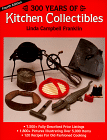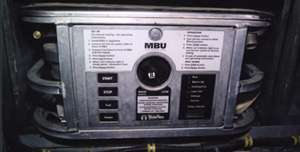
Brilliant Burner
Safety, Efficiency of MBU Reduce
Burden on Army Cooks
Safe and efficient heating for field cooking and kitchen sanitation has started spreading throughout the Army with the Modern Burner Unit (MBU).
The MBU is gradually replacing the M-2 Burner, which is used for heating and cooking by soldiers in the field and on the move. The M-2 Burner has been the primary heat source for field feeding and sanitation since 1960.
The M-2 is used for heating water in the Food Sanitation Center, for cooking food in the Mobile Kitchen Trailer and other Army field feeding applications. However, preparing the M-2 for heating or cooking is time-consuming, and at times even dangerous.
The M-2 Burner is powered by gasoline, which is highly volatile. It must be removed from the kitchen so that it can be safely fueled and its fuel tank pressurized. It must also be preheated and ignited in a separate area. After preheating, it must be carried while burning into the kitchen.
|
|
|
Modern Burner Units are replacing M-2 Burners, which have been in service since 1960. The MBU is powered with JP-8, a common battlefield fuel that is less volatile than gasoline. |
In contrast, the MBU burns JP-8 fuel, which is far less volatile and therefore safer than gasoline. The MBU has a dripless fueling system and requires no preheating. Fueling and ignition are both performed in the kitchen.
“JP-8 fuel is much more like diesel fuel than gasoline,” said Glenn Doucet, MBU project engineer, Product Manager-Soldier Support at the Soldier Systems Center (Natick). “It is safer than gasoline and doesn’t have the strong smell. Service members are exposed to fewer fumes.”
Tim Benson, assistant product manager, PM-Soldier Support is responsible for field-feeding equipment. Benson explained the advantages of the MBU’s push-button refueling and electrical ignition system.
“Unlike the M-2, the MBU never has to be moved for fueling or lighting,” Benson said. “So, compared to the M-2, it is much more convenient and safer for the soldier. All the soldier has to do is push a button and the burner ignites itself. Right now, cooks put in extremely long hours because they have to spend a lot of their time being burner mechanics. The new burner allows them to be more efficient and to spend more time cooking.”
The MBU will generally be powered by alternating current (AC) generators through a power converter to supply direct current (DC) power. The MBU uses 75 watts of 28 volt DC power, reducing the risk of electrical shock. Its electronically-controlled components also reduce hazardous combustion emissions.
Doucet added that another benefit is that the MBU can be powered by a vehicle in case a generator fails.
The MBU can be easily applied to all current field-feeding equipment because it has the same footprint as the old burner.
The MBU is already replacing the M-2 in the Mobile Kitchen Trailer, Advanced Food Sanitation Center and other Army field kitchens. The MBU will also be an important component to the Containerized Kitchen being fielded next year.
The MBU was issued to units of U.S. Army-Europe in Germany in May, two years ahead of schedule. Doucet said about 12,000 burners have been fielded thus far of the total Army requirement of 56,000. Next year, the MBU will be fielded to units in Korea and the Pacific.
July 2000
| Bulletin Board | Keyword Search |
| Bookstore | Links |
| About Us | Recent Additions |


